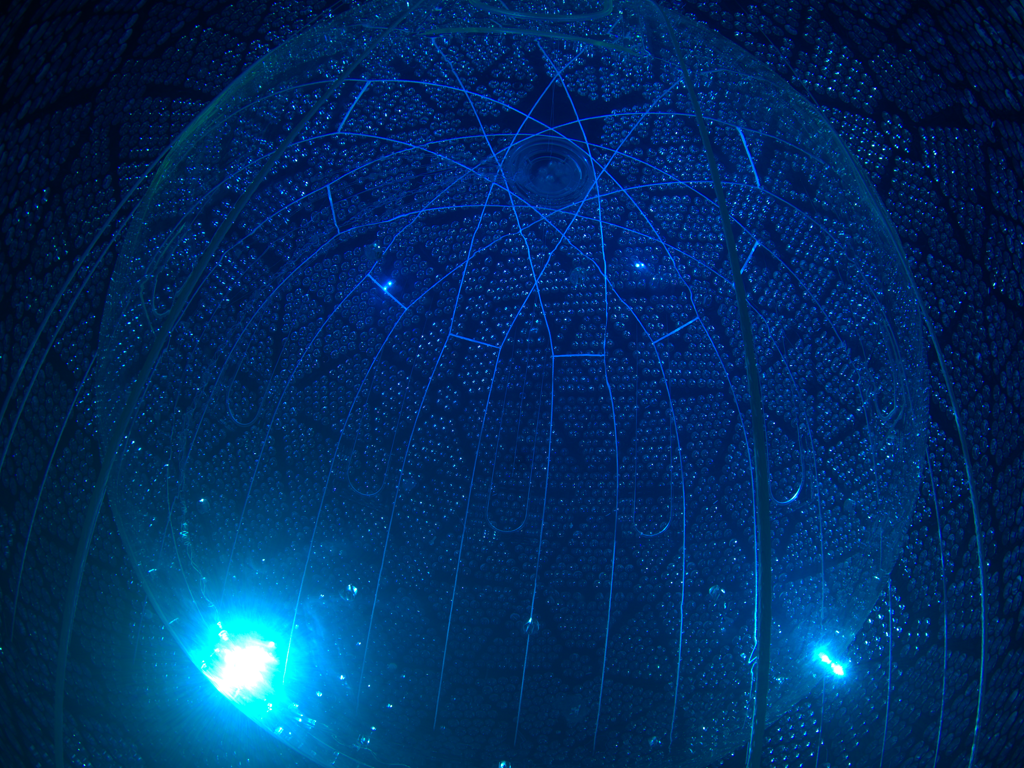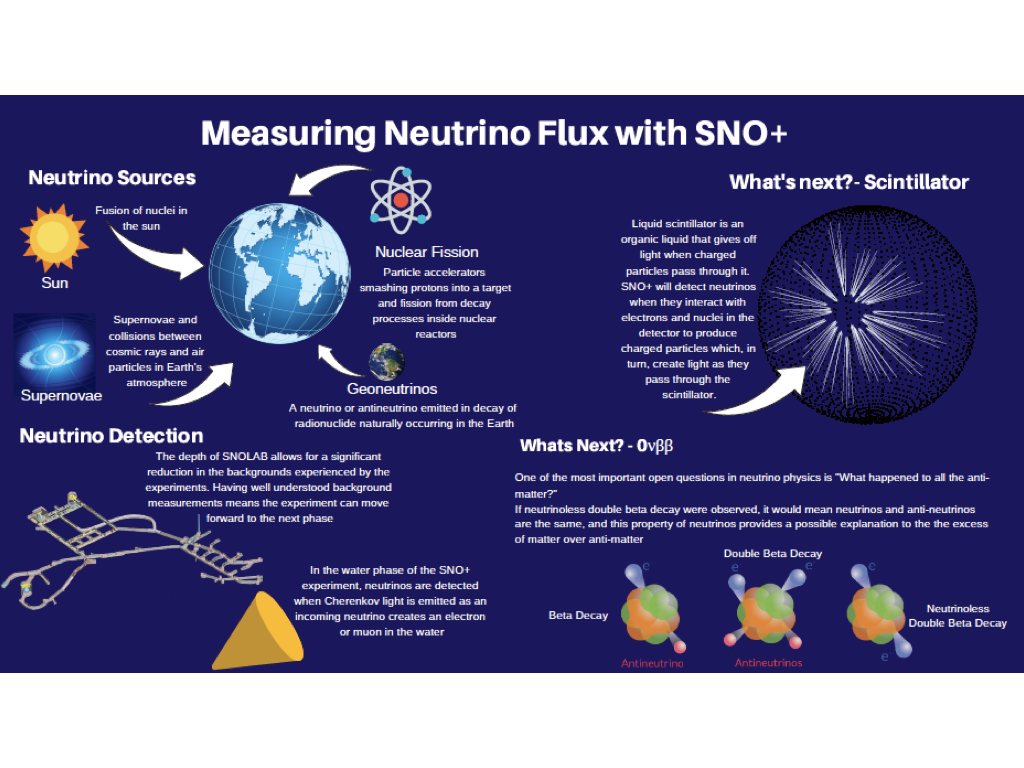SNO+ publishes its first results
"The first papers of the SNO+ neutrino experiment are now being published. They are based on the data collected during the phase in which water was used as active medium in the detector."

The SNO+ experiment started taking data in spring 2017. During 2018, SNO+ functioned as a Cherenkov detector using pure water as the active medium inside the detector. And the collaboration had a busy 2018 preparing the first publications. Solar neutrino measurement results and nucleon decay search results are now out.
The LIP group in SNO+ was responsible for monitoring the detector operating conditions, basic quality selection and analysis of radioactive background evolution. Data quality selection an the very low background environment are key features of the analyses now published.
Several other publications with the water phase data are expected in 2019. For the next phase of the experiment, the water inside the detector will be replaced with 780 tonnes of liquid scintillator with 3.9 tonnes of tellurium (0.5% by mass) added to allow a search for neutrino-less double beta decay. SNO+ uses the acrylic vessel and PMT array of the SNO detector with several experimental upgrades and necessary adaptations to fill with liquid scintillator.
SNO+ is located at SNOLAB in Sudbury, Canada. It is an international collaboration with over 130 members from 28 institutions in 6 countries. Low backgrounds and a low energy threshold allow SNO+ to have a number of physics topics in its program, including neutrino-less double beta decay, geo- and reactor neutrinos, supernova neutrinos, and solar neutrinos.
The papers:
- Measurement of the 8B Solar Neutrino Flux in SNO+ with Very Low Backgrounds (accepted for publication in Physical Review D)
During the water run, SNO+ has re-measured the flux of solar neutrinos similar to what was done in the SNO experiment. The measurement demonstrates extremely low overall background at high energies, which is made possible by the depth of SNOLAB and the careful construction and monitoring of the detector and data quality.
- Search for invisible modes of nucleon decay in water with the SNO+ detector (submitted for publication in Physical Review D)
The SNO+ experiment carried out the world’s most sensitive search for nucleons (protons or neutrons) that decay in particular ways but didn't see that process occur. The experiment was then able to set limits on how rare nucleon decay is. This is an interesting topic because many theories beyond the Standard Model of particle physics predict that nucleons should decay.




